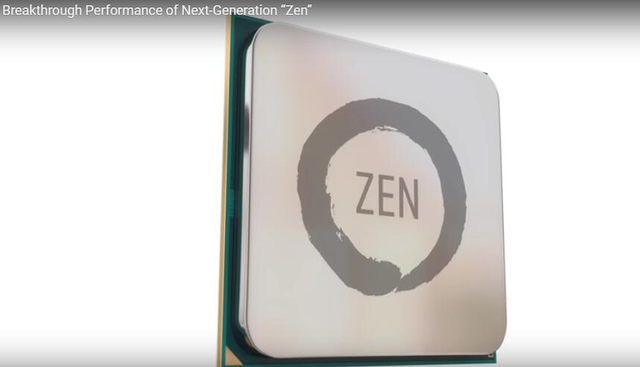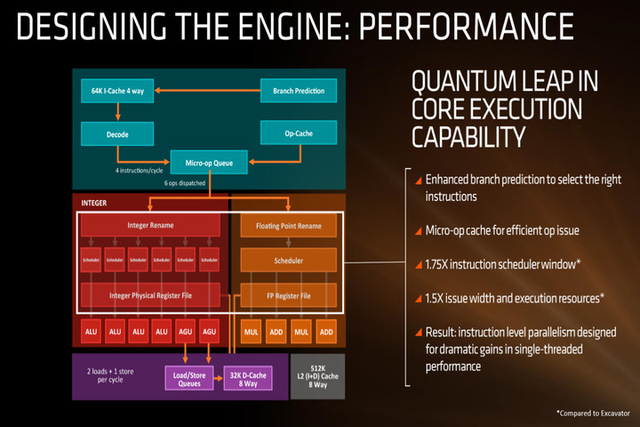
Tencent Digital (Wen Xin) According to the Digital Trends website, AMD held the "The Path to Zen" conference to disclose its new Zen processor x86 core architecture and the first processor to use the core "Summit" More information on Ridge. Simply put, compared with the previous generation architecture, the number of instructions executed by Zen every cycle has increased by 40%. When Summit Bridge is put on the market, it will constitute a considerable threat to Intel.
The AMD conference was held on Wednesday evening and was hosted by AMD CEO Lisa Su. Su Zifeng first expressed to the participants that when he started designing Zen, AMD promised that the performance ratio would be greatly improved. AMD has made significant progress and will disclose a large amount of information related to the development of Zen and Summit Ridge.

As previously reported by the media, the Summit Ridge chip is manufactured using GlobalFoundries' 14nm FinFET process. AMD's Polaris-based graphics chips are also manufactured using the 14-nanometer FinFET process. Summit Ridge integrates eight Zen cores, supports 16 threads, supports AMD's Bristol Ridge AM4 platform, and is compatible with AMD's seventh-generation A-series desktop processors. AM4 supports DDR4 memory, AMD's APU, PCI Express Gen3, USB 3.1 Gen2, and NVMe, SATA Express storage standards. PC products supporting the AM4 platform will be available this fall.
The first Zen-based processor is targeted at the high-end desktop market, and AMD will launch the Zen family of processors for the enterprise server, portable PC and embedded product markets.

According to Digital Trends, Summit Ridge's highlights include support for 2 threads per core (similar to Intel's so-called hyper-threading), 8MB L3 cache, 512KB L2 cache, and 2 AES units designed to improve computing security.
A slide presented by Mark Papermaster, AMD’s senior vice president and chief technology officer, shows that each Zen core has a “substantially†enhanced prefetch feature, independent low latency L1 instructions And L1 data cache, up to 5 times the buffer bandwidth. Other notable technological advances include enhanced branch predictions, more advanced instruction schedulers, and more. All of this means that single-threaded performance will increase dramatically.
Fibborn said to the participants, “We set up a team to build high-performance, new x86 processor designs from scratch. This is a new microarchitecture that can cover everything from PCs and portable devices to high-performance computers. Various types of equipment inside.â€

In the above slide, AMD explained the development of its processor core technology since the "Bulldozer" architecture was released. Until "Piledriver," "Steamtoller," "Excavator," and the current Zen, AMD has been steadily increasing each of its cores. The number of instructions executed in the clock cycle reduces the power consumption per cycle. The above slide shows the improvement in AMD's performance ratio since the release of the Bulldozer processor core.
In a presentation at this conference, AMD compared 8-core Summit Ridge samples with the 8-core Intel Core i7-6900K Broadwell-E, both with an actual clock frequency of 3 GHz.
Digital Trends claims that the multi-threaded Blender rendering test program showed that the Summit Ridge sample was slightly faster than the Core i7-6900K Broadwell-E when rendering the Zen logo. Intel just released this chip in June.
AMD also demonstrated the Naples processor for enterprise servers, which integrates 32 Zen cores and supports 64 threads. Suresh Gopalakrishnan, AMD’s vice president of corporate technology, demonstrated a two-way server motherboard with two Naples chips installed.
Analyst Patrick Moorhead told Digital Trends by e-mail that "The Zen performance demonstrated by AMD last night was very compelling. From now until the actual release of the product, AMD has much work to do, but at least I It is believed that AMD's situation in the processor area is much better than in the past few years."
According to AMD, its graphics card market share will increase in the next 12 months, driven by the Polaris architecture and the Vega architecture planned for release next year. AMD also expects that Zen core technology will enable its PC business to resume growth and promote the growth of semi-custom chip business. Naples will also bring AMD back to the "high-margin" x86 server market.
Source: Digital Trends